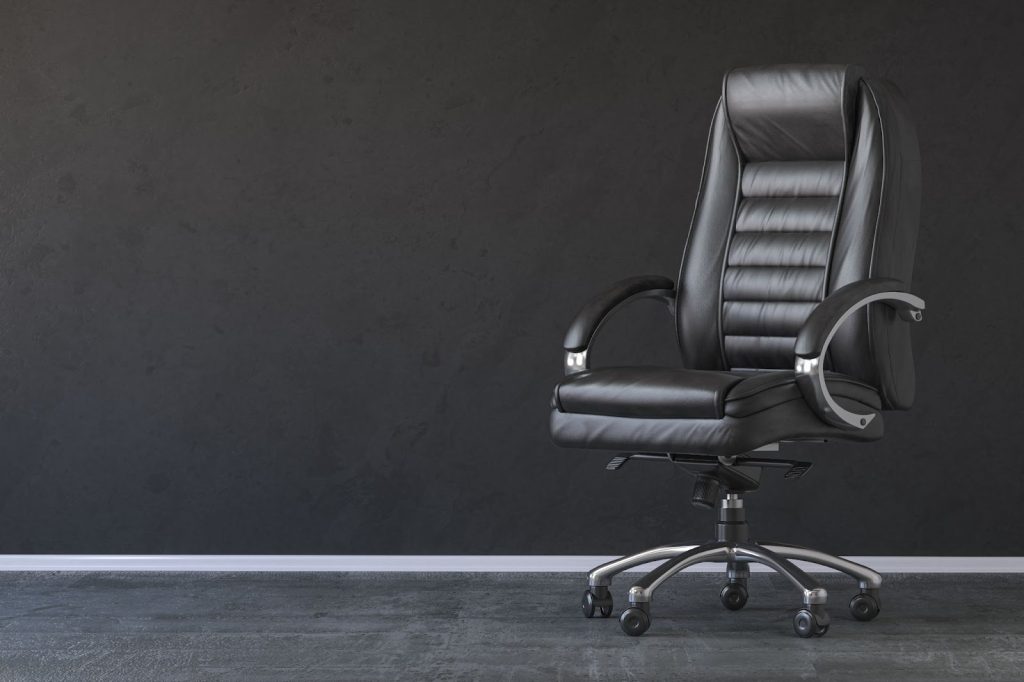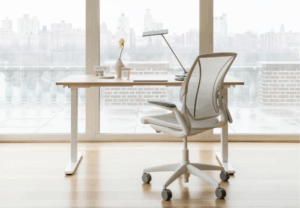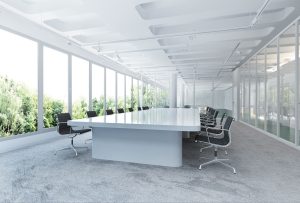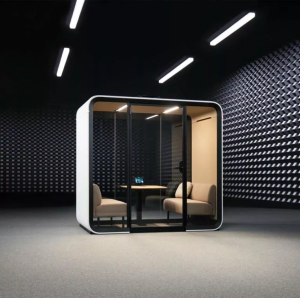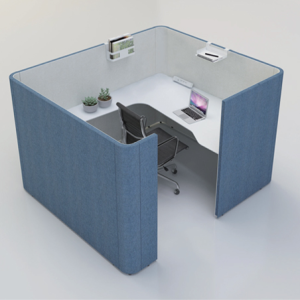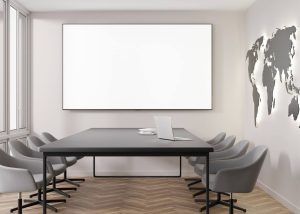Tired of chairs that peel, trap heat, or wear out too fast? The right material depends on how you work whether it’s for long meetings, creative tasks, or back-to-back calls each need different levels of comfort, airflow, and support. What feels fine for one day may not hold up through one year.
This guide breaks down the most common office chair materials, what they’re good for, and how to choose one that fits your space and budget.
Boost work efficiency with DSolutions Singapore. Reach out via email, call, or our contact form for any enquiries!
Why Material Makes or Breaks a Chair
Office chair materials can affect how you feel throughout the day. If your work involves long hours at a desk, the wrong material can trap heat, wear out quickly, or cause discomfort over time.
Moreover, it also affects how long the chair holds up. Some materials show wear faster, while others maintain their shape and surface with less effort. Over time, that difference can affect both cost and performance.
Beyond function, the material also shapes how the space feels. A leather chair sets a more formal tone. Mesh looks lighter and more modern. Fabric softens the overall look, which suits home offices and shared workspaces.
But appearance isn’t the only thing to consider. Each material handles daily use differently when it comes to upkeep. Some surfaces are easy to wipe down, while others need more care to stay in good condition.
Hence, choosing the right one helps you stay focused and comfortable, especially during back-to-back tasks.
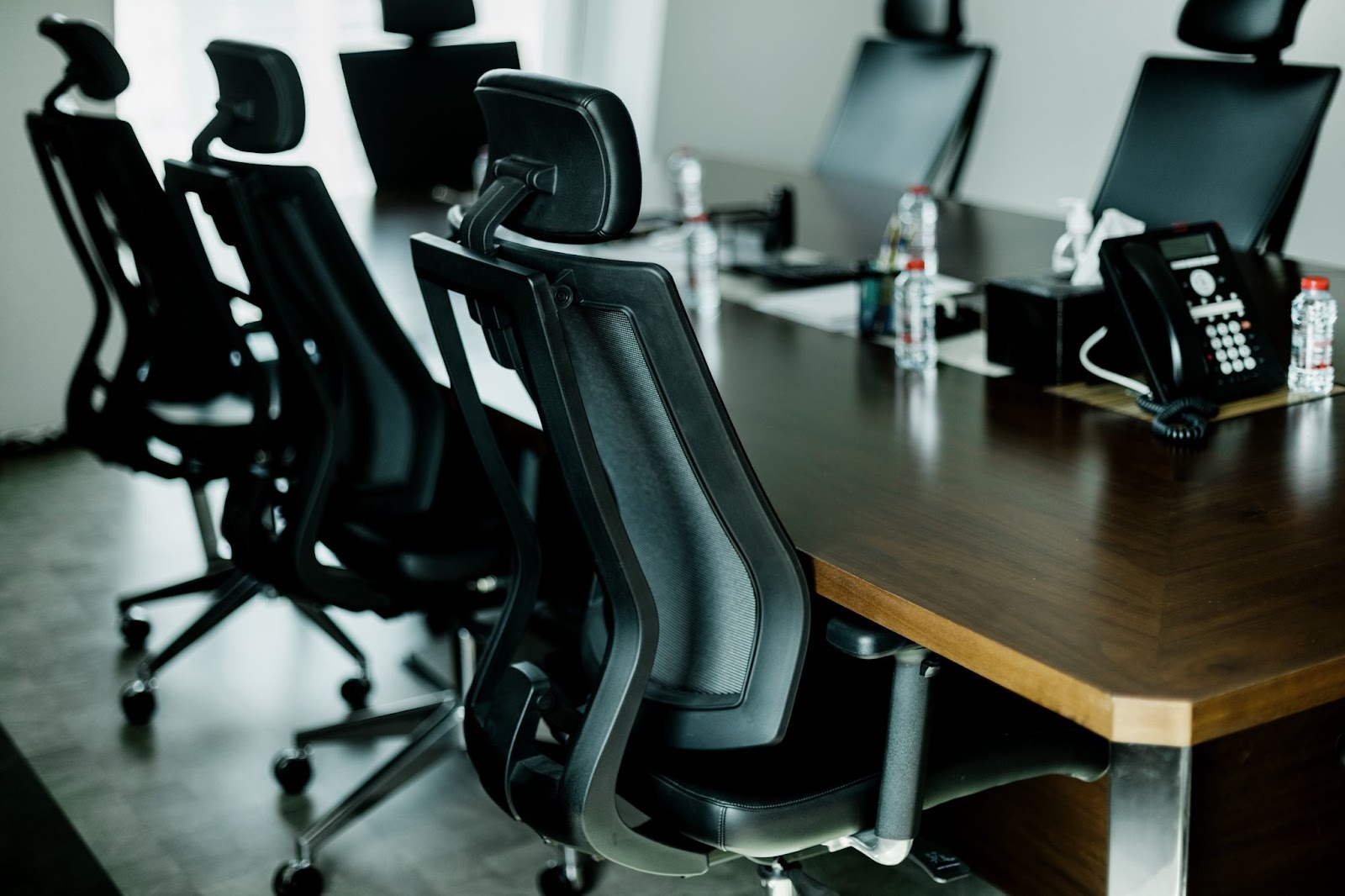
(Source: Envato)
Types of Office Chair Materials
Each material has its strengths and trade-offs. What works for one setup might not suit another, so it helps to think about how often you use the chair, your workspace environment, and how much care you’re willing to give it.
Mesh
Mesh is one of the most popular office chair materials, especially in modern workplaces. It allows air to pass through the backrest, which keeps you cooler during long hours at your desk. It also offers flexibility and light support without feeling bulky.
Mesh is best suited for open-plan offices, warm environments, or anyone who spends most of their day seated. However, it may lose tension over time and doesn’t offer the same cushioned feel as other materials.
Fabric
Fabric chairs feel soft and are available in many colours and textures. They’re a good choice for offices that want a relaxed look or a more comfortable feel. Fabric also blends well in home office setups.
However, fabric can be harder to keep clean. It may absorb dust, sweat, or spills if not maintained regularly. If you eat or drink at your desk often, this might not be the most practical option.
Genuine Leather
Leather gives off a more executive look. It’s commonly used in meeting rooms, director offices, or any space where appearance matters. Real leather ages well and, with care, can last for years without losing its shape.
That said, it’s one of the more expensive office chair materials. It also needs regular cleaning and conditioning to stay in good condition. If you’re working in a humid space or near windows with direct sunlight, leather may not be the most suitable choice.
PU Leather (Faux Leather)
PU leather looks like real leather but comes at a lower price. It’s easier to clean and works well for shared spaces or offices with high turnover. It’s also a good middle ground for those who want a formal look without the maintenance of real leather.
Over time, PU leather can crack or peel, especially if exposed to heat or rough use. It’s more suited for short- to medium-term use.
Vinyl
Vinyl is used in chairs that need to be cleaned often. You’ll often see it in clinics, salons, or meeting rooms where hygiene is important. It resists spills and stains and can be wiped down easily.
The downside is ventilation. Like PU leather, vinyl doesn’t breathe well. In warm offices or during long sitting periods, it may feel warm or sticky.
Plastic or Polypropylene
These are often found in task chairs or budget options. Plastic chairs are lightweight and easy to clean, which makes them suitable for short-term seating, meeting areas, or visitor use. They’re also stackable, which saves space.
However, they don’t offer much support or cushioning. For full-day use, this material may not be comfortable.
Browse through our office chairs for better productivity and comfort in your workspace!
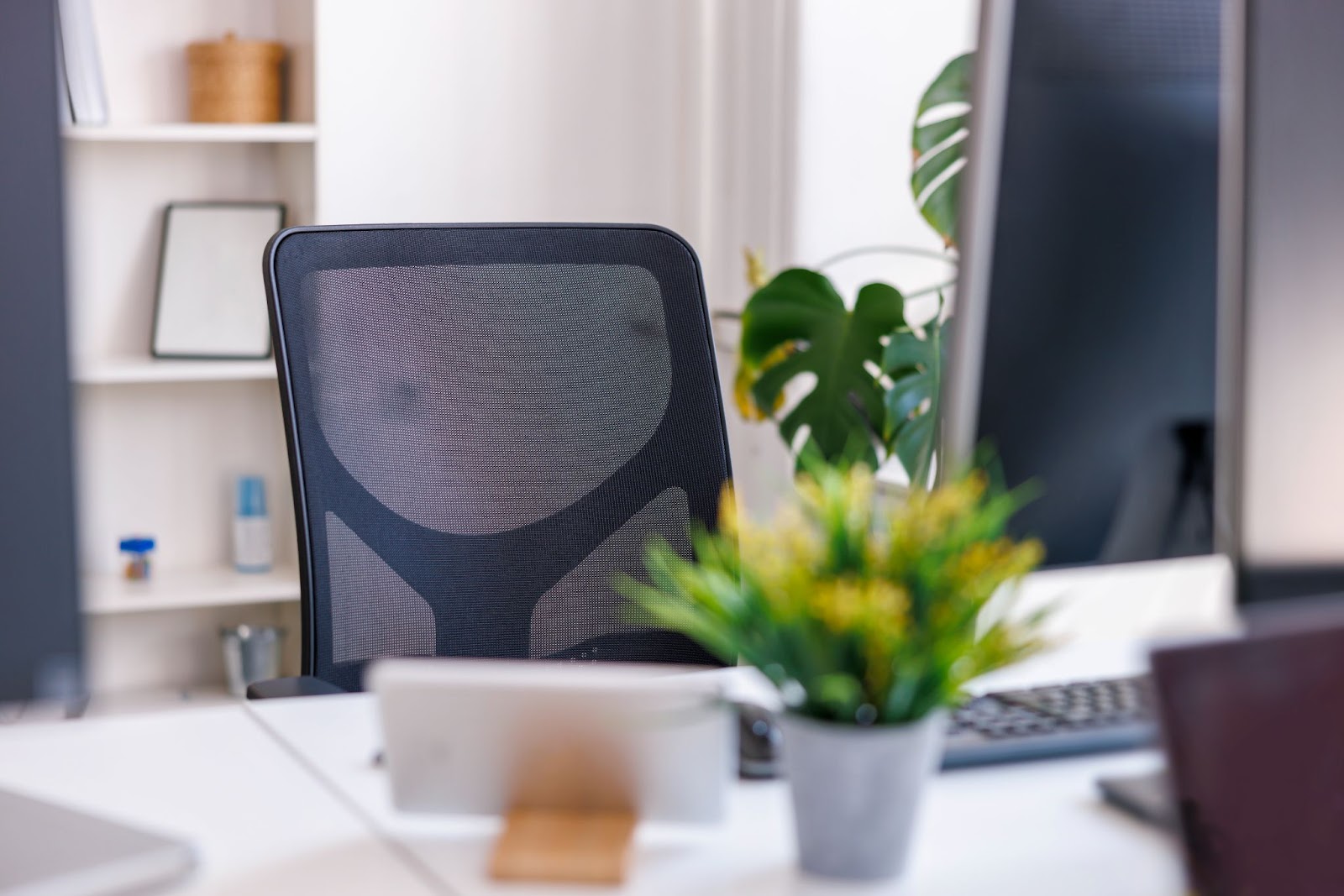
(Source: Envato)
Choosing the Right Material for Your Space
With so many office chair materials available, choosing the right material depends on how you work, where you work, and what you need the chair to handle each day.
If you spend most of your day seated, breathability and support will matter more than appearance. Mesh or ergonomic fabric chairs can reduce discomfort and help with posture during long hours.
If you often host clients or lead meetings, a leather chair may suit the room better and create a more professional feel.
In shared spaces or high-traffic areas, low-maintenance materials like vinyl or PU leather are easier to keep clean. On the other hand, if you’re setting up a home office and want something softer or more personal, fabric might be a better fit, even if it needs more care.
Here’s a quick guide to help you decide:
| Work Environment | Recommended Material |
|---|---|
| Long hours, daily use | Mesh, breathable fabric |
| Executive or formal office | Genuine leather |
| Home office | Fabric, PU leather |
| Hot or humid space | Mesh |
| Clinics, salons, shared use | Vinyl, PU leather |
| Short-term or guest seating | Plastic, basic task chairs |
If you’re still unsure, ask yourself:
- How many hours do I sit each day?
- Do I need something that’s easy to clean?
- Is the chair for me, or will others use it too?
- What kind of look fits the space?
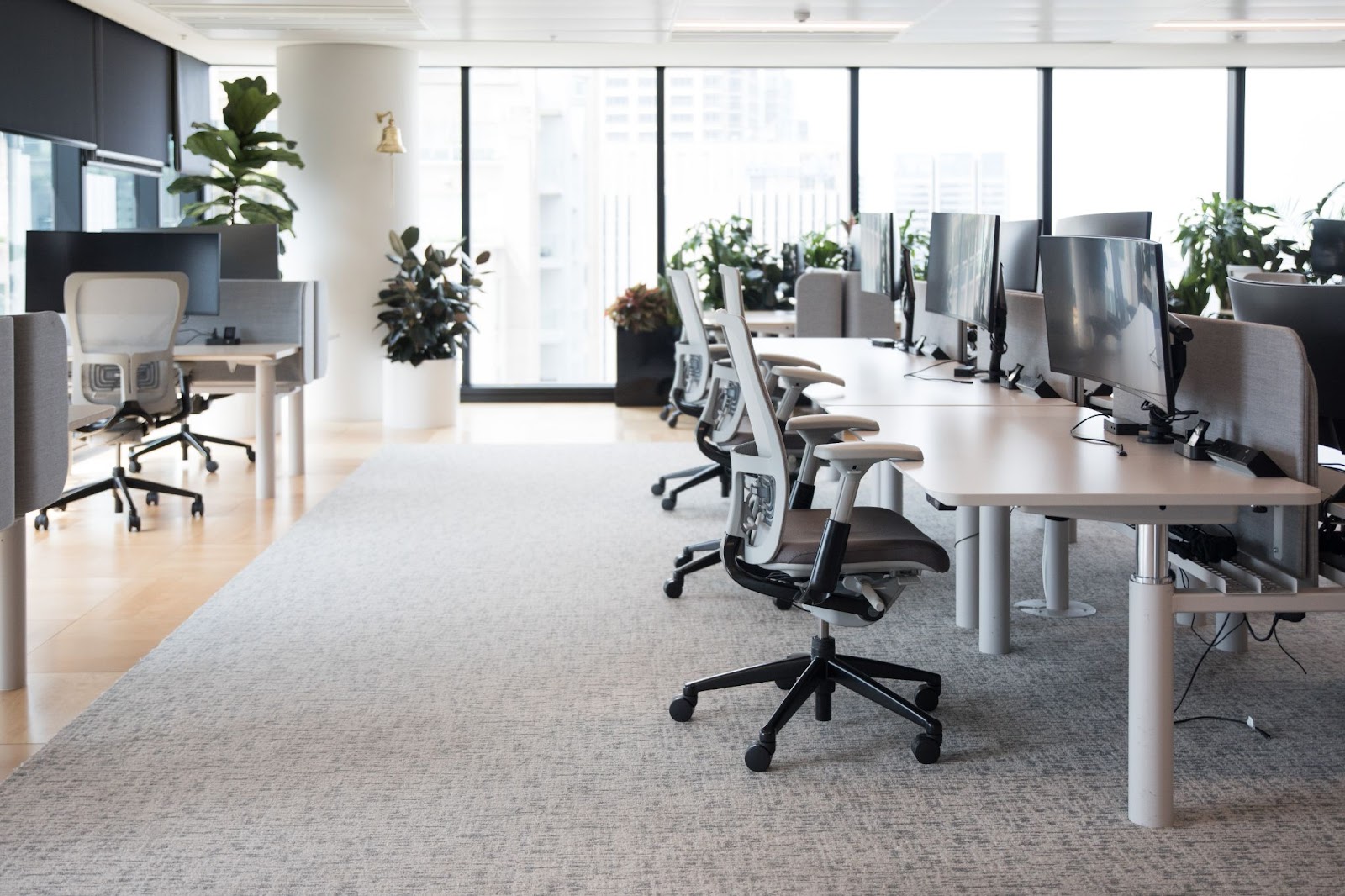
(Source: Envato)
Care Tips to Maximise Lifespan
A good chair lasts longer when you take care of it. Here’s how to look after each type of material:
Mesh
- Dust with a vacuum or soft brush
- Avoid leaning too far back to prevent stretching
- Keep away from sharp objects
Fabric
- Vacuum weekly to remove dust and crumbs
- Blot spills immediately with a dry cloth
- Use a mild fabric cleaner for stains
Genuine Leather
- Wipe with a dry or slightly damp cloth
- Apply leather conditioner every few months
- Keep away from direct heat and sunlight
PU Leather / Vinyl
- Wipe using a damp cloth and gentle soap.
- Avoid alcohol-based or harsh cleaners
- Watch for signs of peeling if used often
Plastic / Polypropylene
- Wipe with a damp cloth to remove dirt or marks
- Avoid dragging or stacking roughly to prevent scratches
- Store in a dry area to prevent fading or warping
Conclusion
Choosing the right office chair materials makes a difference in how you work, feel, and maintain your space. Each material has its role, some are built for comfort, others for style or easy care. Take your time to find what suits your routine, then explore options that meet both your needs and your budget.
Boost work efficiency with DSolutions Singapore. Reach out via email, call, or our contact form for any enquiries!

